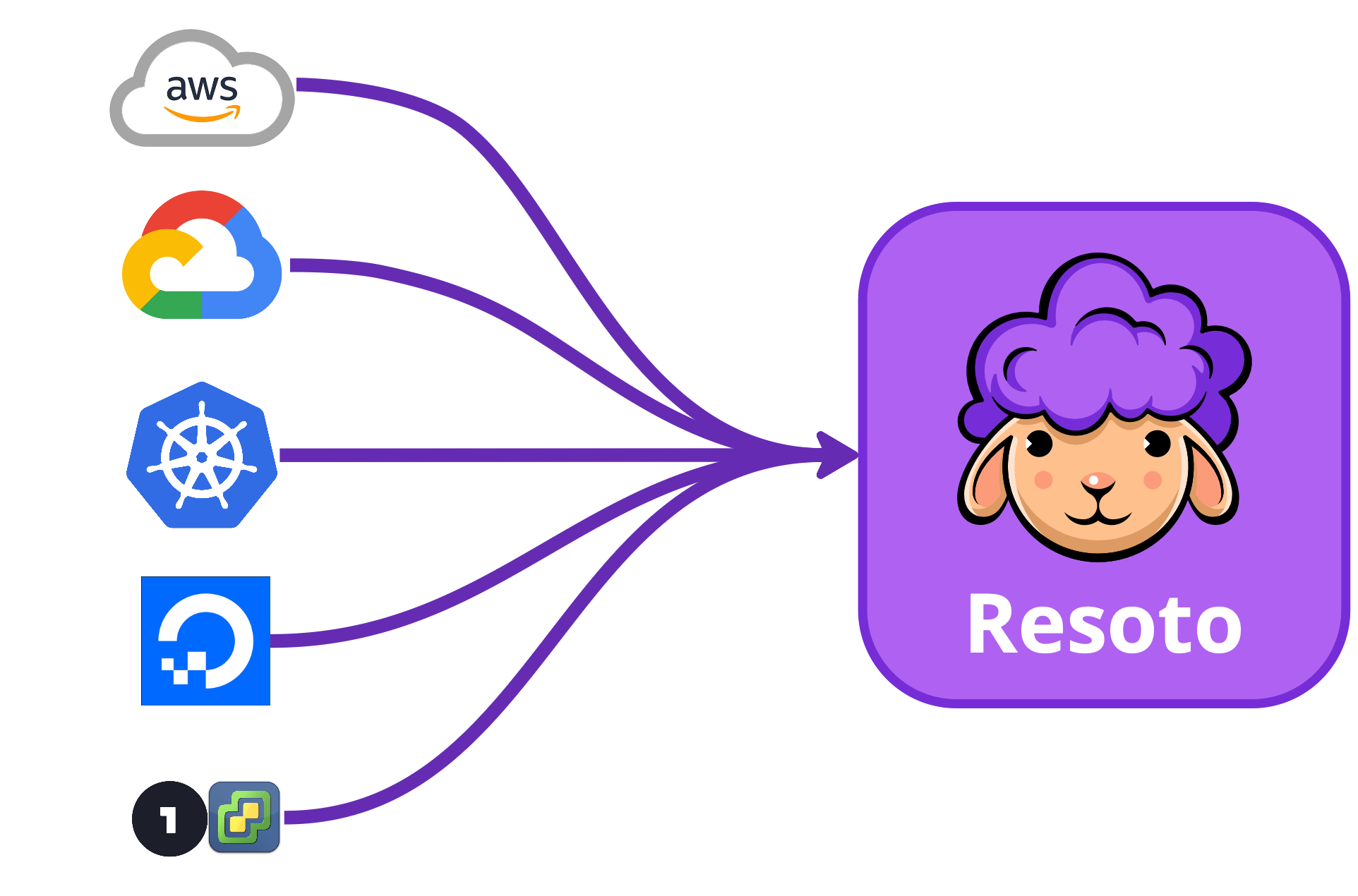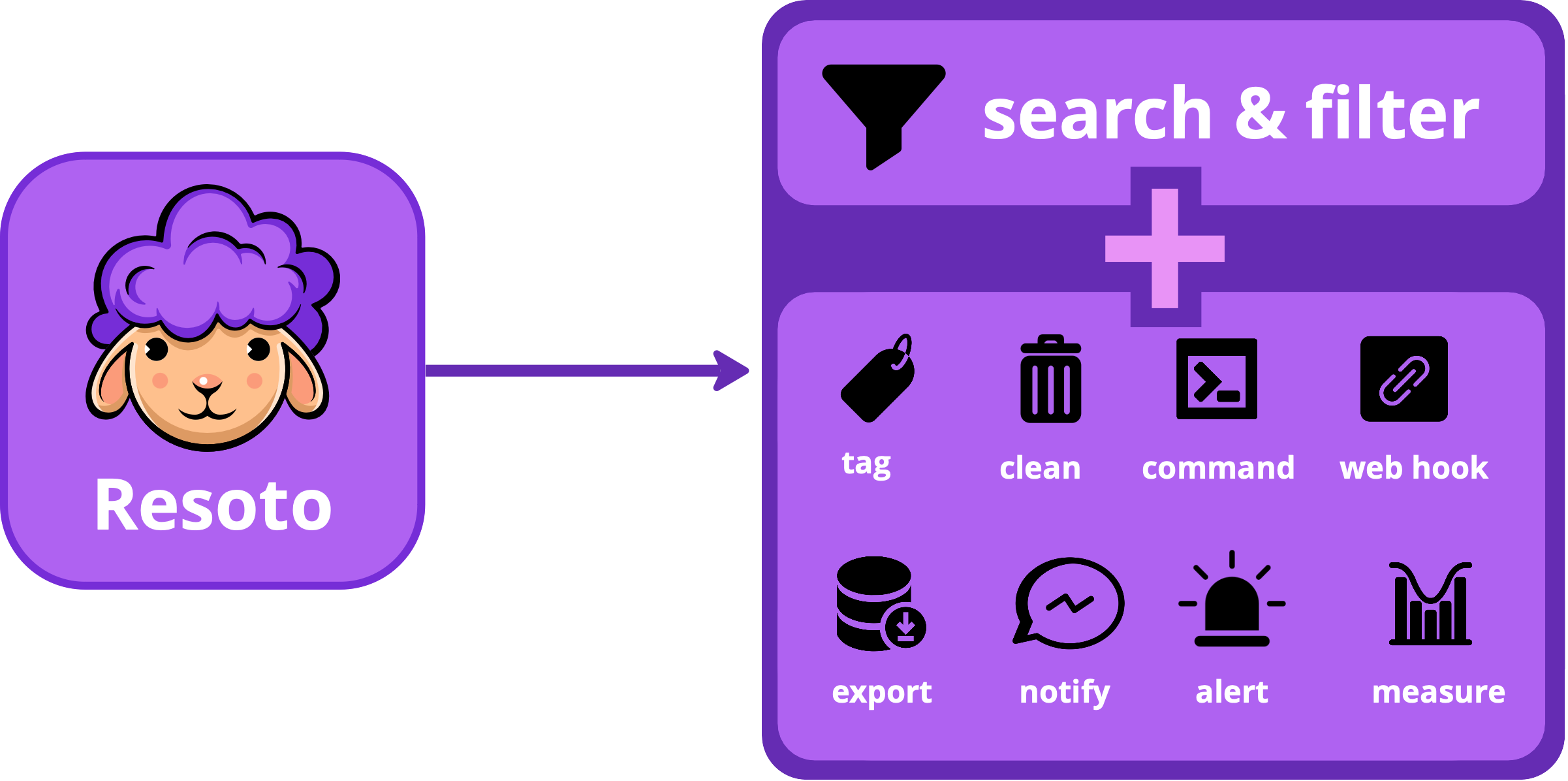Overview
Resoto is an open-source cloud asset inventory tool for infrastructure and security engineers.
Resoto enables a broad set of exploration and automation scenarios. Its foundation is a graph-based data model, which exposes resource metadata and dependency relationships between your service's assets.
A powerful CLI and user-friendly UI allows you to search, explore, and manage your cloud resources.
Resoto's automations facilitates resource management like tagging and cleanup based on custom rules and logic, ensuring that your infrastructure remains organized and optimized.
Resoto's documentation is organized as follows:
-
Getting Started walks you through the installation process. Start here if you're new to Resoto.
-
How-To Guides provide step-by-step instructions for performing specific tasks.
-
Concepts provide an overview of how Resoto works.
-
Reference is a manual covering the details of Resoto. It is assumed that you already have a basic understanding of important concepts.
-
Development lists instructions and guidelines for Resoto development and contributions.
Don't want to manage your own Resoto installation? Get started for free with Fix, an all-in-one security dashboard built on top of Resoto.
Why Cloud Asset Inventory?
Cloud-native infrastructure today is fragmented because:
-
Resource Proliferation in the Cloud
With containers and serverless functions, services have become more abstract, and the size of the individual deliverable has become smaller but many times more numerous.
-
Bulkhead Partitioning of Resources
Cloud providers have made partitioning resources into separate accounts, projects, and namespaces easy. This allows for better isolation and security, but also makes it harder to get a consistent view of the state of the world.
-
Shared Ownership
Engineers using Infrastructure-as-code (IaC) in CI/CD pipelines make it easy to spin up new resources.
-
Multiple Service Providers
Many organizations use multiple services and cloud providers to take advantage of the unique features of each provider.

Resoto helps you overcome these challenges by providing a single source of truth for your cloud assets.
With Resoto, you can search, explore, and manage your cloud resources in a consistent manner, no matter which cloud provider, account, project, or namespace they are in.
Resoto's complete, up-to-date picture of your infrastructure combined with automations enable you to easily manage all of your cloud assets.

